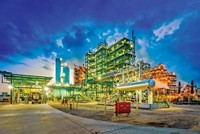Advertisement
Grab your lab coat. Let's get started
Welcome!
Welcome!
Create an account below to get 6 C&EN articles per month, receive newsletters and more - all free.
It seems this is your first time logging in online. Please enter the following information to continue.
As an ACS member you automatically get access to this site. All we need is few more details to create your reading experience.
Not you? Sign in with a different account.
Not you? Sign in with a different account.
ERROR 1
ERROR 1
ERROR 2
ERROR 2
ERROR 2
ERROR 2
ERROR 2
Password and Confirm password must match.
If you have an ACS member number, please enter it here so we can link this account to your membership. (optional)
ERROR 2
ACS values your privacy. By submitting your information, you are gaining access to C&EN and subscribing to our weekly newsletter. We use the information you provide to make your reading experience better, and we will never sell your data to third party members.
Industrial Safety
Chemical Safety Board to investigate Philadelphia refinery fire
Incident injured four workers and could have caused release of hydrofluoric acid
by Jeff Johnson
June 24, 2019

The US Chemical Safety and Hazard Investigation Board (CSB) is deploying a four-person team to investigate an explosion and fire at Philadelphia Energy Solutions (PES), a refining complex in southwest Philadelphia.
The accident occurred during the early morning hours of June 21 and injured four workers. It started in the alkylation unit where hydrofluoric acid (HF) is used to raise the octane of gasoline produced by the refinery, the company says.
HF is used in about one-third of the 150 US refineries. Fears of release of HF in a dense, lethal, acidic cloud have led people living near such facilities and members of Congress to call for better controls or substitution. PES reports no HF release from the incident.
The US Environmental Protection Agency’s most recent analysis of HF use and risk management provisions was in 1993. Earlier this year, the CSB called on the EPA to review that work to determine if the provisions are sufficient to protect refinery workers and nearby communities and if HF substitutes are available. The board notes that two technologies—a solid-state approach and an ionic liquid technology—are being developed to replace HF in at least two refineries.
The PES accident comes on the heels of incidents at a Husky Energy refinery in Superior, Wisconsin, in 2018 and a former ExxonMobil refinery in Torrance, California in 2015. Like PES, those facilities use HF, operate near residential neighborhoods, and were investigated by CSB.
PES is one of the world’s oldest oil-related facilities and is the largest refinery on the US East Coast, operating along the Schuylkill River for over 150 years. It has recently struggled financially. Last August, the refinery emerged from bankruptcy proceedings when Credit Suisse Asset Management and Bardin Hill Investment Partners, together with the Carlyle Group and other investment firms, took over the refinery.





Join the conversation
Contact the reporter
Submit a Letter to the Editor for publication
Engage with us on Twitter